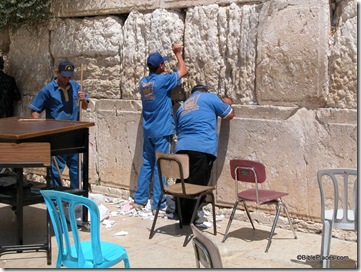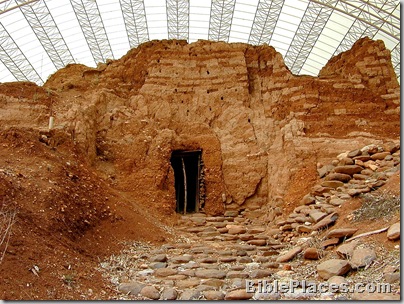From Arutz-7:
The ancient crevices of the Western Wall, filled with prayer notes tearfully tucked inside by tens of thousands of worshippers during the course of the year, underwent their twice-yearly cleaning-out on Sunday, under the watchful eye of the Rabbi of the Holy Sites, Rabbi Shmuel Rabinovich.
The notes are emptied out of the Wall just before Passover and just before Rosh HaShanah. The purpose is to make room so that people can “insert their prayer notes at the Wall without fear that the notes will fall out and be trampled upon,” Rabbi Rabinovich explained.
The notes, many of which contain the full names of family members, as well as requests for health, sustenance, a spouse, solutions for personal problems, and more, are treated with great respect by the workers. The workers even immerse themselves in a mikveh (ritual bath) before beginning the holy work of removing the notes.
The notes are removed without the use of metal bars or utensils – which stand for warfare and the taking of life (see Exodus 20,22) – but rather with wooden rods. Following their removal, the notes are taken to the nearby ancient Mt. of Olives cemetery for burial.

